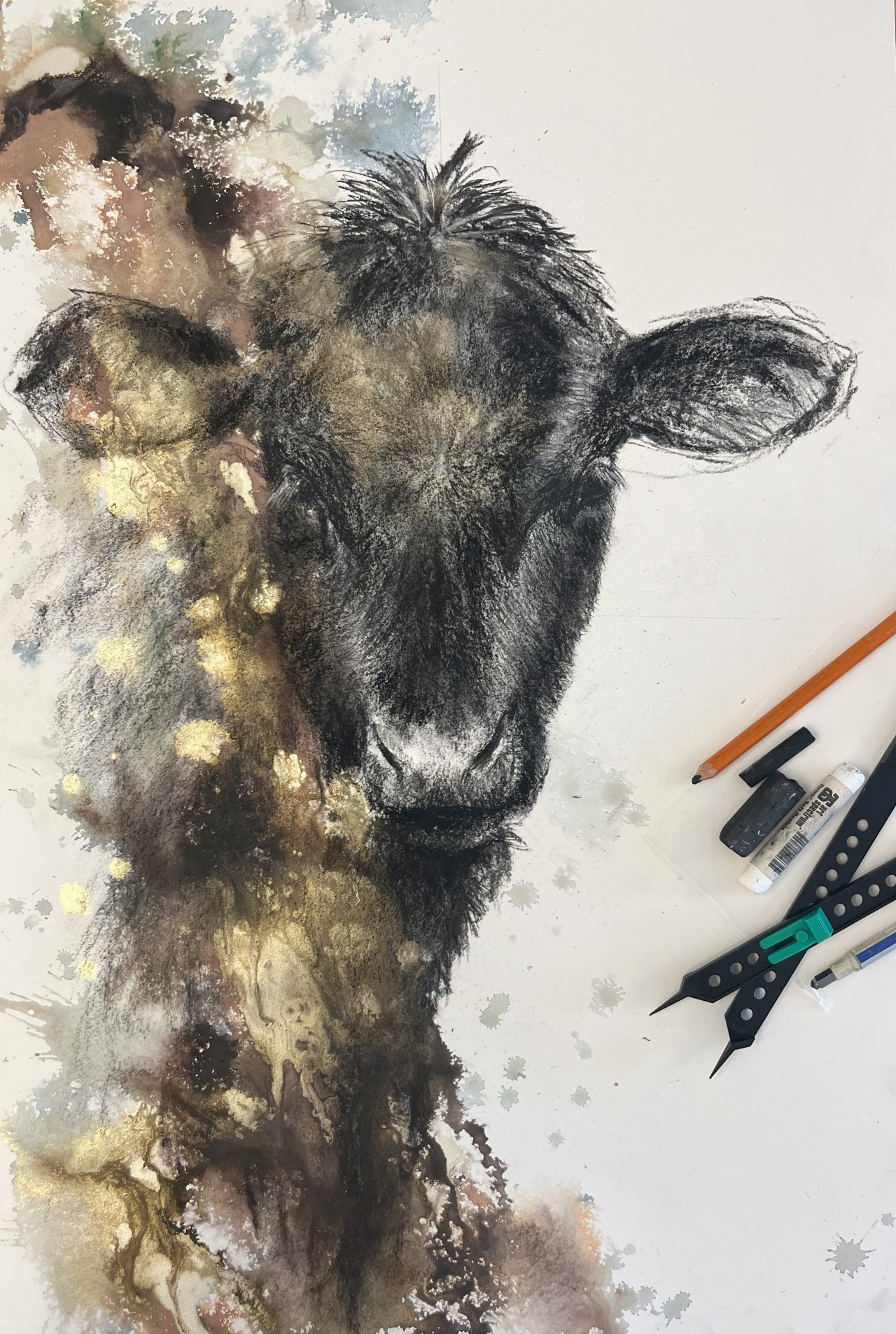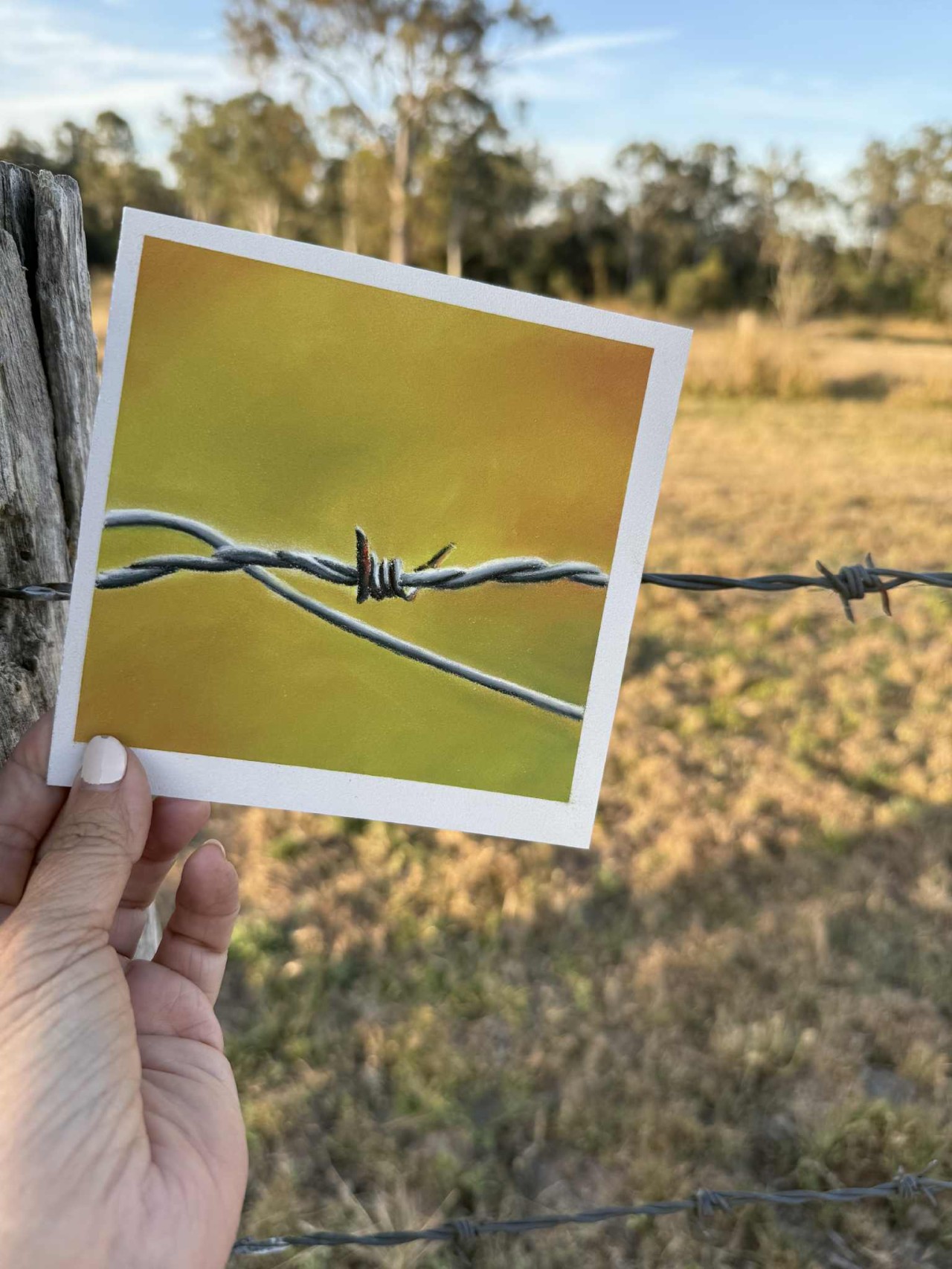Choosing the Right Stage for Your Art: Smarter Exhibitions & Competitions
"Learn how to choose the right competitions and exhibitions for your art so it resonates, connects, and has the best chance of selling."
When it comes to selling art—or even winning awards—where you show your work can make all the difference. It’s not just about creating beautiful pieces; it’s about matching them with the right audience. This week, I want to dive into how to work smarter when entering art competitions and planning exhibitions.
Why Choosing the Right Stage Matters
Too often, artists put work into competitions or exhibitions where it doesn’t quite fit the audience. That doesn’t mean the work isn’t good—it just means it’s not in front of the right people. The right stage increases your chances of selling, resonating with viewers, and maybe even winning prizes.
Real-Life Example: Biggenden Show

Recently, I entered a local art competition in Biggenden with a charcoal and ink cow painting. It won the animal section, but what struck me most was the feedback. Locals kept saying, “That looks like my cow!” Even though it was my own calf, it reminded people of their own lives and experiences.
That connection—that sense of recognition—is what you want. In a farming town, a farm subject makes sense. The same work might flop in a big city gallery, but in rural Queensland? It speaks directly to the audience.
Match Your Work to the Location
Think carefully about where your art will hang:
-
Farm series? Rural towns like Gayndah, Bundaberg, Rockhampton, or Townsville are your best bet.
-
Island-inspired series? Fraser Island work belongs in the Fraser Coast region—or even at tourist hubs like Kingfisher Bay Resort.
-
Heritage work? Historic towns like Gayndah connect with themes of memory and the past.
Kevin Rogers, a master coloured pencil artist, recently had an exhibition in Gayndah. His work reflects times gone by—memories, heritage, and nostalgia. In Queensland’s oldest town, that theme was spot on. No surprise that he sold multiple pieces (and prints) even before opening night.
Do Your Research First
Before you hit submit for a competition or book a gallery space, ask:
-
Who goes to this gallery or show?
-
What kind of work sells here?
-
Does my art style resonate with their audience?
-
Would locals see themselves, their land, or their memories in my work?
And if the answer’s no—it doesn’t mean your art is wrong. It just means you need to find a better match.
Think Beyond Originals
68bffeeef114f_lg.png)
Tourist galleries, local gift shops, and cafes may not be suited for large original pieces, but they often do well with:
-
Prints
-
Greeting cards
-
Tote bags
-
Smaller originals
A student of mine recently had success by approaching a gift shop in Hervey Bay. They weren’t interested in cityscapes—but they jumped at the chance to stock her whale and turtle work. Right place, right subject, right audience.
Competitions to Consider
If competitions are part of your plan, research them properly. Look at past winners and ask: does my art fit here?
Some great examples for realism and wildlife artists include:
-
The Doyles Art Award (Qld) – representational, no abstract.
-
Holmes Art Prize for Realistic Bird Art (Qld).
-
David Shepherd Wildlife Artist of the Year (UK, worldwide entries).
-
Duck Stamp Art Competitions (US & Canada, species-specific).
-
Waterhouse Natural Science Art Prize (Australia).
And for fun? The Poo-tastic Tasmanian Paint Off. Yes, painting with poo. Only in Tassie!
Working smarter with exhibitions and competitions isn’t about changing your art—it’s about finding the right fit. The right stage means your art feels at home, resonates with viewers, and has a far better chance of selling.
So before you hit submit or say yes to an exhibition, pause and ask yourself: Will my work connect with the people walking through the door?
That one question could make all the difference.
Kerri xx
PS. Want to learn to draw wildlife and nature art in soft pastels? Then Follow This Link to learn more about The Creative Barn Membership

Want to learn about Soft Pastels?
Click on the button to register and get instant access to the free Pastel Basics for Beginners workshop.
Listen as I walk you through the essentials supplies needed to get started in Pastel painting.
I teach you how to create this little barbed wire piece during the class. Everything you need is in the PDF workbook you'll receive when you register.
 Kerri Dixon
Kerri Dixon 
